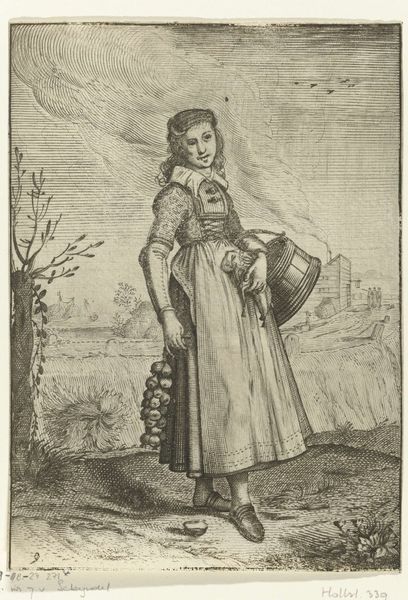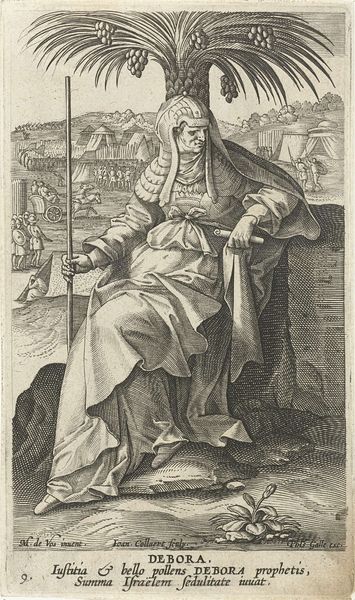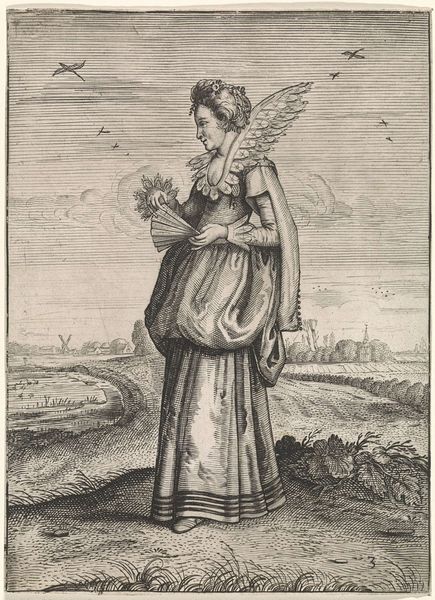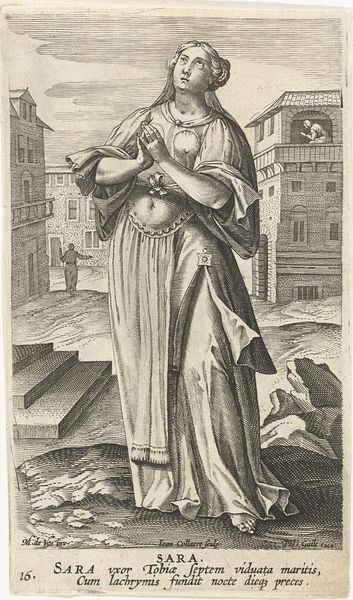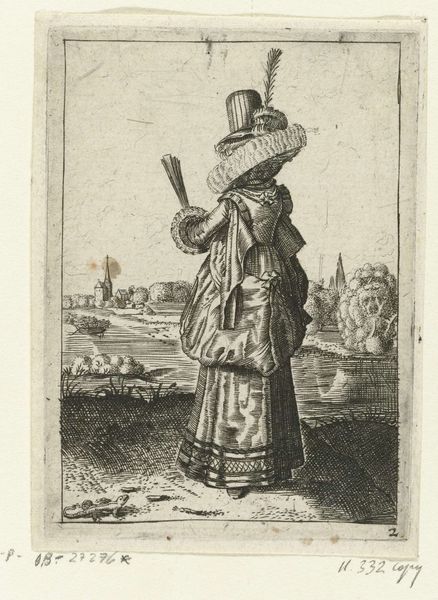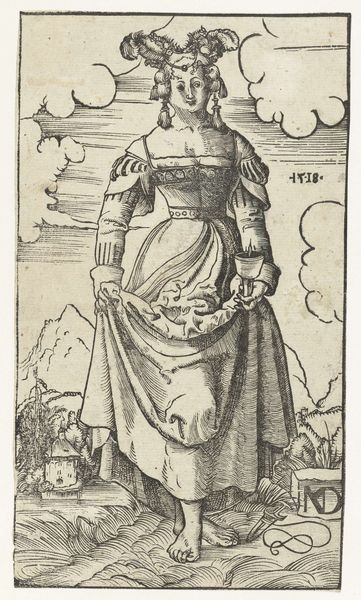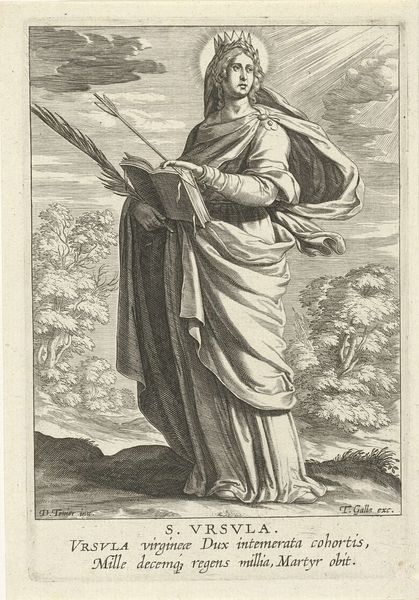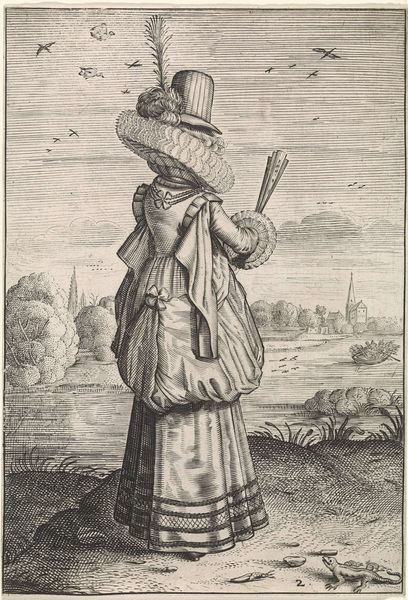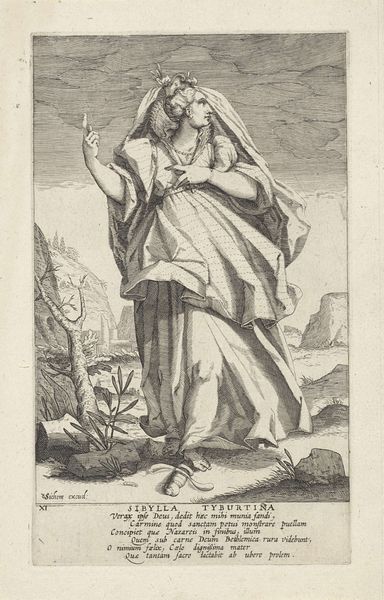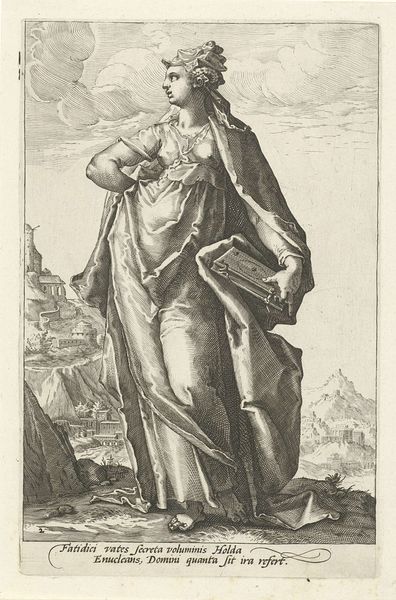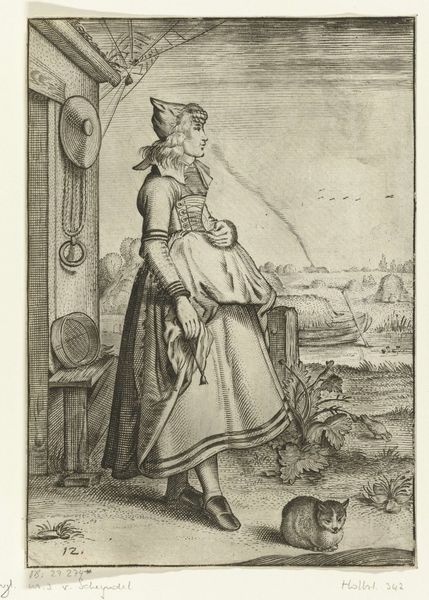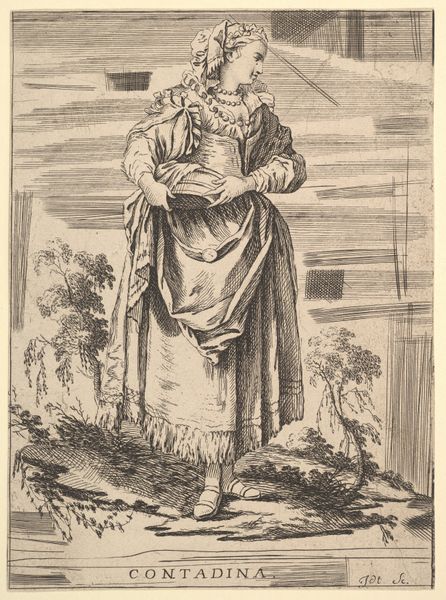
Habitus et cultus Matronarum Nobilu et Rusticarum (Clothing and Manners of Noblewomen and Countrywomen) 1619 - 1623
0:00
0:00
print, engraving
#
portrait
#
baroque
# print
#
old engraving style
#
figuration
#
genre-painting
#
engraving
Dimensions: height 197 mm, width 139 mm
Copyright: Rijks Museum: Open Domain
Adriaen Matham created this print, "Clothing and Manners of Noblewomen and Countrywomen," in the Netherlands, sometime in the first half of the 17th century. Here, Matham uses the conventions of genre painting to classify social status and the values associated with it. This image is of a bare-footed peasant girl set against a rural backdrop. At first glance, this image can be viewed as an objective record of Dutch rural life. But we should consider this image in the context of the print market in the Dutch Golden Age, and the social function that prints played in articulating social identity. The Dutch Republic was one of the first societies to develop a widespread print culture. Prints were collected into albums and displayed on walls, demonstrating the owner's taste and education. The print medium helped to create norms and ideas about social class. We can imagine how prints like this helped to shape and reinforce ideas about social roles. By studying sources such as costume books, manuals of etiquette, and other images of the period, we can develop a richer understanding of the social context of this image.
Comments
rijksmuseum about 2 years ago
⋮
This series highlights the contrast between the clothing of Dutch noblewomen and that of women from the provinces. The regional clothing evolves slowly over time, while the fashionable attire of the elite is subject to foreign influences. For example, the woman in plate 1 wears a Spanish, conical farthingale beneath her skirt, while the woman in plate 2 wears the bellshaped version from France.
Join the conversation
Join millions of artists and users on Artera today and experience the ultimate creative platform.
